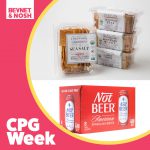4 Food Safety Takeaways from Fancy Food

Some of the food industry’s most terrifying nightmares are rooted in threats no one can see.
Listeria outbreaks, allergen recalls and looming Food Safety Modernization Act (FSMA) deadlines set the scene for the very real tales haunting brands and suppliers– and for good reason. In 2016 alone, there was more than 750 food recalls reported, 20 percent more than the year before.
But according to some food safety experts, the rise in recalls is not signifying that food is growing increasingly unsafe, but rather the opposite. Thanks to technology, it’s now easier than ever to detect a pathogen presence and track where the outbreak came from.
During the Summer Fancy Food Show in New York City this week, LeAnn Chuboff, the VP of Technical Affairs for the Safe Quality Food (SQF) Institute, and Robert Garfield, the chief food safety assessment officer and SVP for Food Marketing Institute, spoke about food safety’s newest trends and technology during a presentation at the newly debuted Level Up Experience. Here are four takeaways from the panel to keep your food safety nightmare from turning into a reality.
Know Your Threats
Undeclared allergens and listeria contamination are the two most common reasons for recalls, according to Chuboff and Garfield. Over the past six months, listeria in particular has been the root of many recalls, affecting categories from nuts and dried fruits to chickpeas.
Though there is much to be done to try to stop food contamination from pathogens, Chuboff said it can be unavoidable. But, she added, companies should still be prepared.
“We are dealing with two inconsistent things: food and people,” she said. “Even in the best run company with best sanitation, [contamination] happens… But when something like that happens, the company that has a food safety plan recovers a lot quicker than without it.”
Understand FSMA and Know What’s Happening
Throughout the presentation, Chuboff and Garfield repeatedly asked brands and suppliers one question: “Are you FSMA ready?”
The FSMA was enacted in 2011 as the first major change to U.S. food safety regulations in over 70 years. Its lengthy mandates have been rolled gradually, and its compliance deadlines will hit even smaller companies by the end of 2017.
The over 200-page document outlines new regulations including increased inspections, especially for foreign suppliers, and requires detailed food safety plans. It also identifies risks and controls, specifies record keeping and supply-chain communications, and adds traceability mandates and sanitary transportation efforts.
To comply with FSMA, suppliers also need to keep stay informed on technology that helps to identify contaminants and trace them, Garfield said. In particular, he noted whole genome sequencing (WGS), a molecular technology that determines the complete DNA sequence of an organism, which enables the traceability of food borne pathogens’ complete DNA strand.
The panelists also pointed to the potential of SQF codes. These can be printed on products and allow manufacturers to easily track and check items in the case of a recall.
Create A Foods Safety Management Program
A core rule to arise out of the FSMA was the Hazard Analysis and Risk-Based Preventive Controls (HARPC) food safety plan requirement, which dictates that companies need to revamp and rewrite their internal food safety plans. Previously companies were required to have Hazard Analysis and Critical Control Points (HACCP) regulations when dealing with some potentially at-risk foods like juice and seafood, and FSMA expands what such plans are needed for.
A strategic and efficient plan not only spells out how to test and react to contamination, but also how to leverage management support, conduct internal audits with follow ups, implement corrective action and become replicable, according to Chuboff.
“It’s your brand to protect,” Garfield said. “And when management is committed to food safety, recalls and market withdrawals are lower, efficiencies are increased, and overall costs are lower.”
Garfield added that beyond scheduled checks and HARPC plans brands should also conduct random audits and stay clear of becoming too stuck in a routine.
“If not audits become predictable and that’s dangerous,” he said. “We need to eliminate that checklist mentality.”
Be A Leader
Regardless of what system is used to manage food safety, Chuboff stressed that a plan is only as strong as the team implementing it and called upon organizations to change their cultures when talking about food safety issues. She said there needs to be a “winning attitude” that stems from the top down.
“I was reading an article about food safety where it asked workers on the line ‘Can you stop the line?’ she recalled. “But I think the better question would have been ‘Would you?’ Because I think their responses to that is a reflection of where your company is.”













